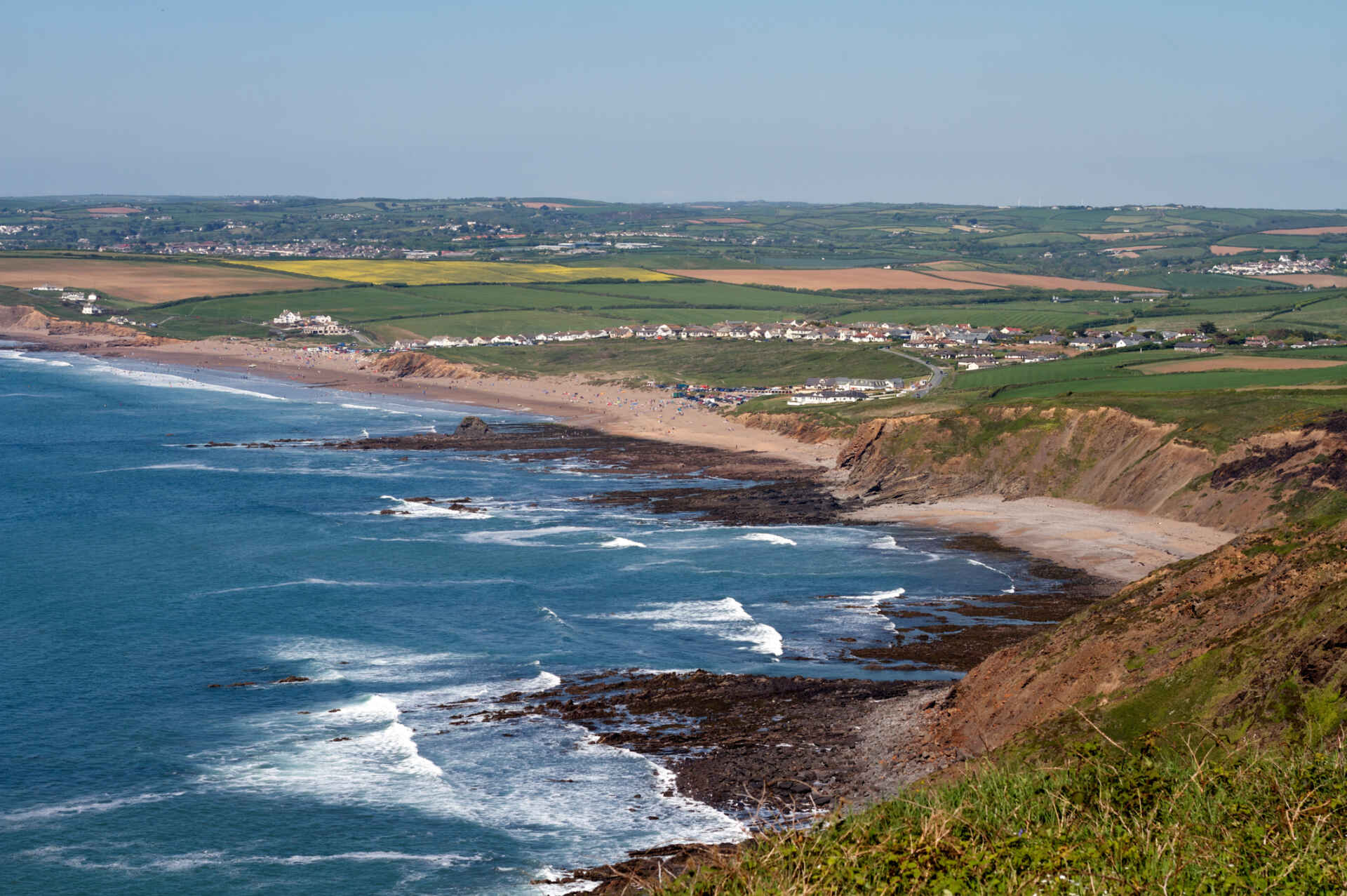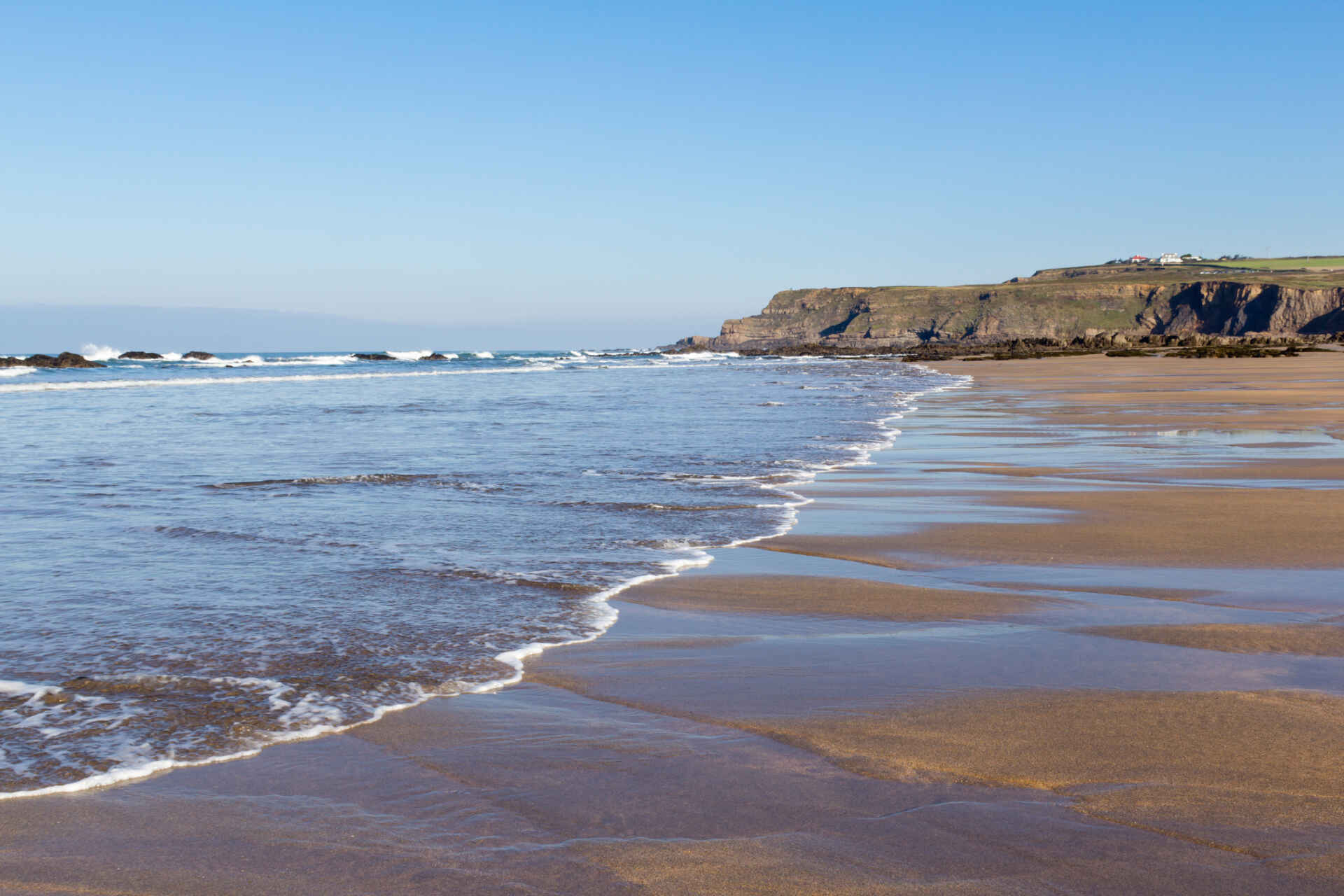Widemouth Bay is one of the most spectacular beaches on Cornwall’s north coast and with its long, wide sweep of sand it is easy to understand why it is so popular. Surfers especially relish this wave pounded shore taking full advantage of the rollers coming in from the Atlantic Ocean but it is also a favourite with families who can enjoy the numerous of rock pools and bodyboarding in the shallows. This beach has a fascinating history too, it was also once the scene of numerous shipwrecks as well as being a favourite with smugglers and today hides a much more modern secret.
Shipwrecks on Widemouth Bay
Shipwrecks were very much a part of life on this coast for hundreds of years. And one man called John Bray left an astonishing record from the 18th century of some of the wrecks at Widemouth, documented in a series of letters to the famous Parson Hawker of Morwenstow. Writing as a very elderly man Bray did not always recall the exact dates or the names of the ships but the cargo, the crews and the circumstances were still clear to him. There was a ship carrying “many monkeys”, two sloops wrecked on the same night carrying coal and a supposed pirate ship which washed up a mountain of muskets, bayonets, boarding pikes, swords and three survivors onto the rocks.
On one occasion in 1770 Bray claimed that he dreamt of a shipwreck. He said that he awoke with fright and jumped on his horse and rode for Widemouth Bay. On arriving at the beach he saw a French brig breaking up in the waves “laden with birds of a foreign kind, limmons and orranges”. As the sailors tried to tie themselves to anything that would float Bray bravely rode out into the waves on his horse and after several attempts managed to rescue all of the stricken crew.
Like the whole of the north coast of Cornwall the beauty, majesty and wildness of Widemouth continues to captivate.
“This bay is about six miles across, the shore bordered with cliffs of dark craggy slate, time-rent and scooped and shivered into every form by the fury of the tempestuous waves. Near Dazard the headlands plunged down precipitously into the ocean depths over which they cast a deep shadow.”
Cyrus Redding, 1842:
Hidden secrets
Widemouth Bay is also close to the ever mysterious GCHQ Bude, the government communications headquarters, its white dishes dominate the skyline, and this beach also hides a curious secret beneath the waves. It is the landing point for nine submarine cables that carry telecommunication signals from across the globe. Signals are sent from here between the UK and various locations worldwide including the USA, Canada, India, France, Spain and West Africa.
Another unusual feature of Widemouth is it’s church which is tucked away from the prevailing winds a little in land. The Church of Our Lady and St Anne is a little wooden building built in 1929 as a private oratory but it soon became ‘a chapel of ease’ for the bay’s growing population and saved them the journey to the nearest church at Poundstock. It makes a peaceful spot for reflection.

